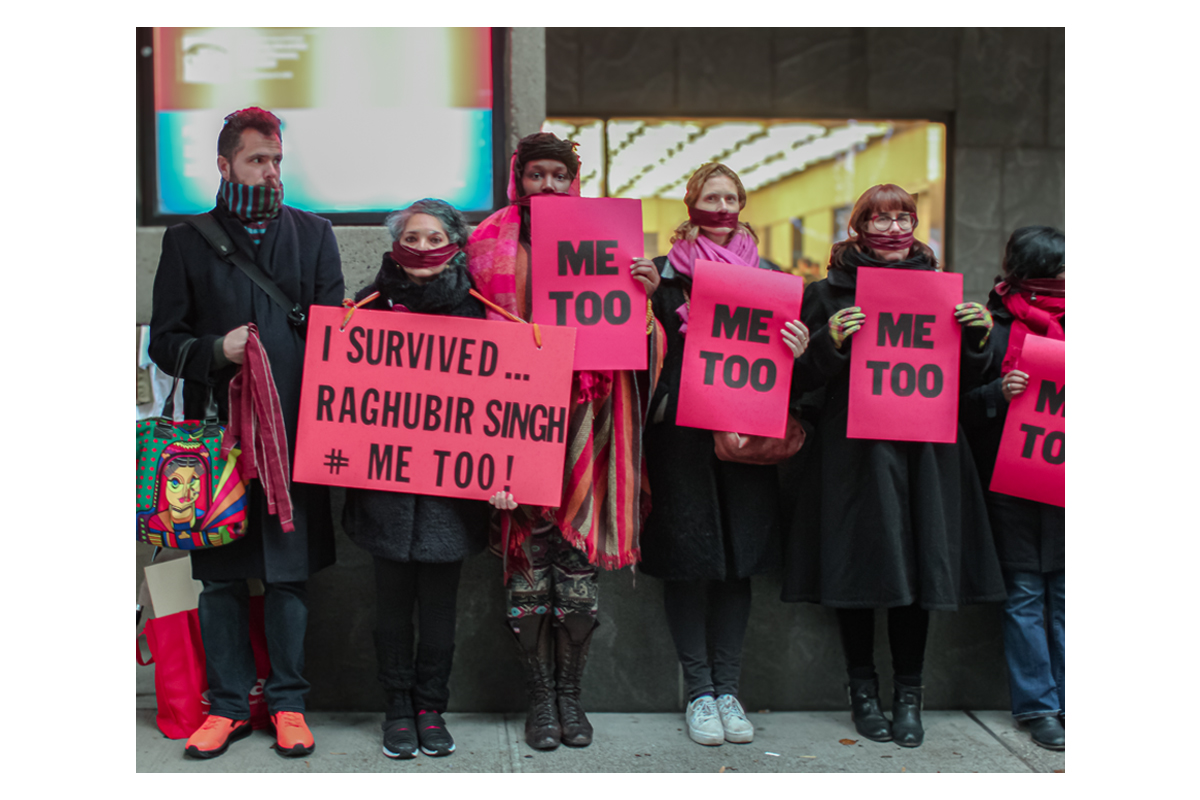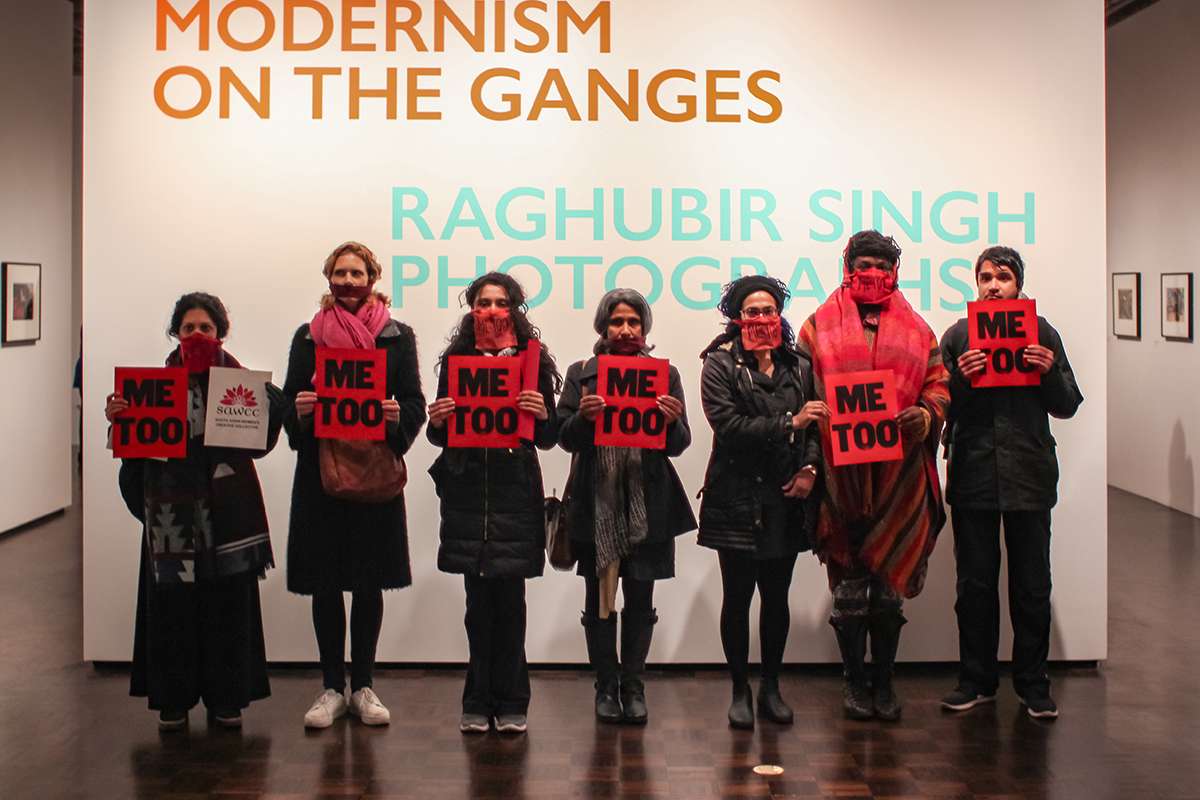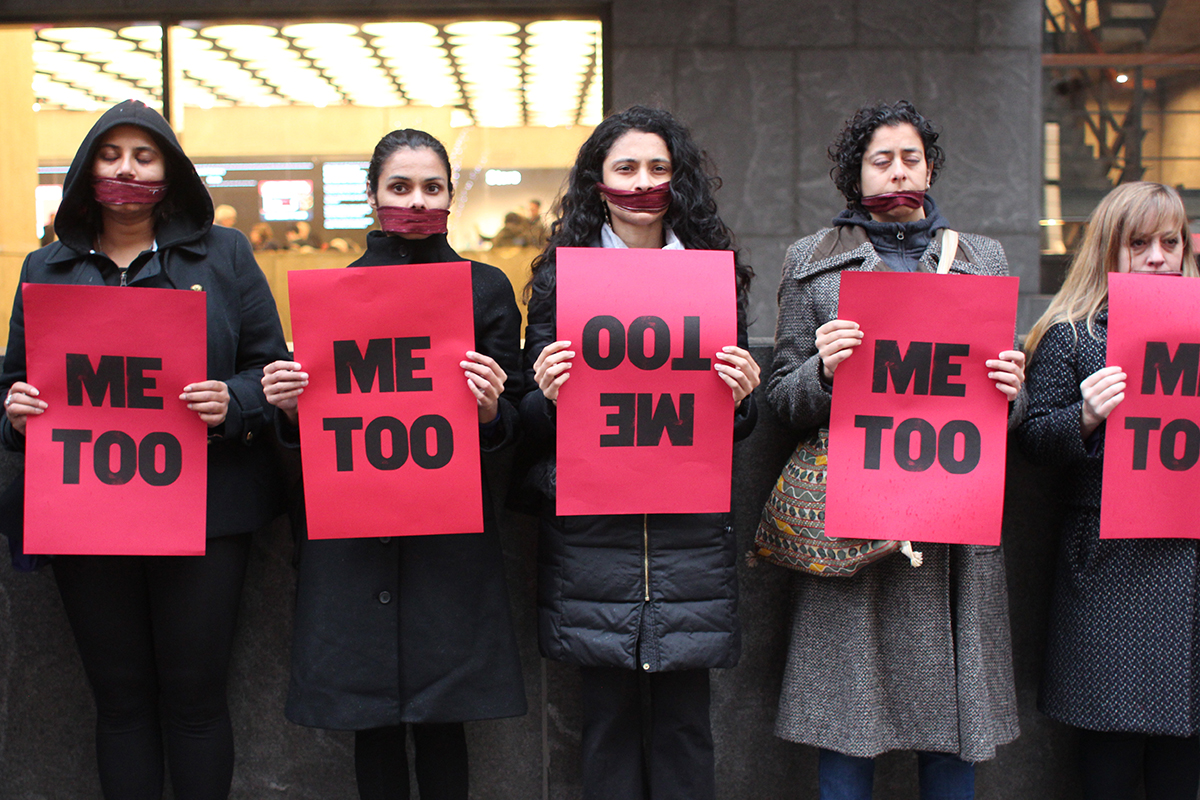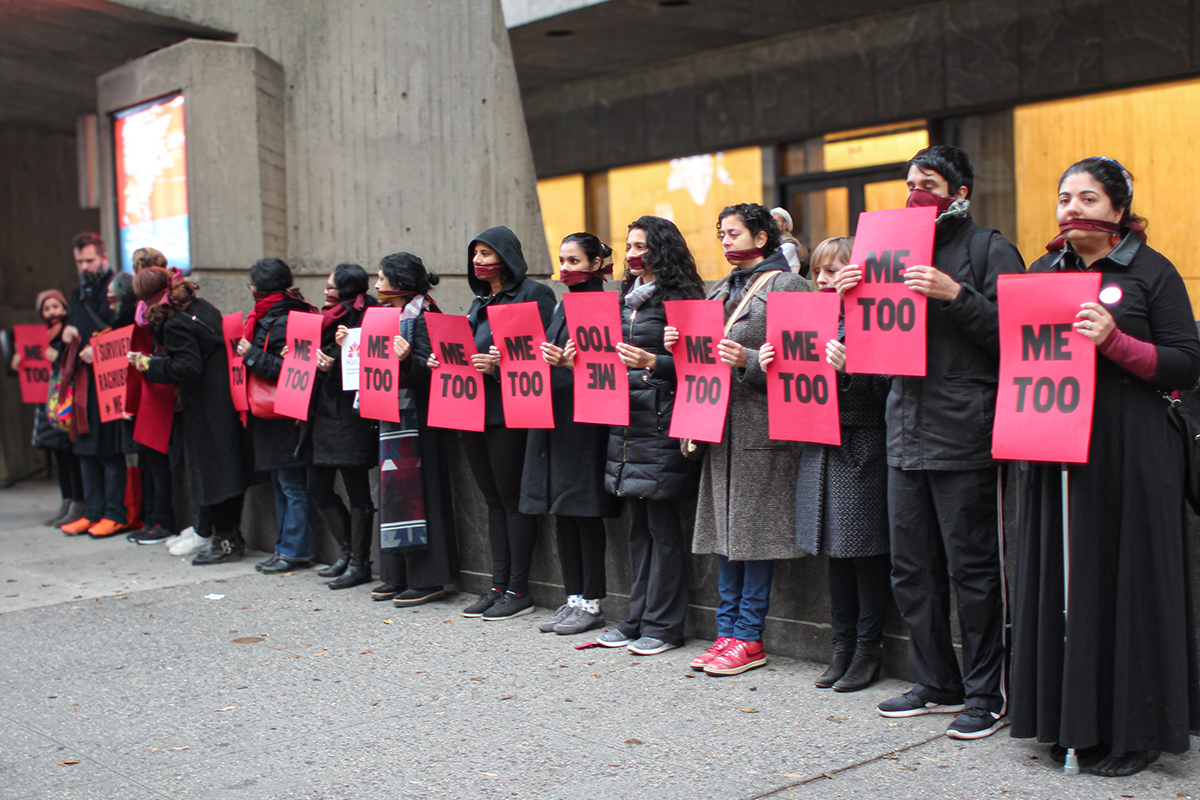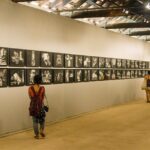The #MeToo Movement in the Indian Art Community
2018
The year sees the second wave of #MeToo testimonies in India, with several artists coming under scrutiny for inappropriate sexual advances, harassment and intimidation. Foreshadowing the large volume of complaints that pour in was the 2017 protest by the artist Pyaari Azaadi (formerly known as Jaishri Abichandani) at the Met Breuer in New York, where she alleged assault by the late photographer Raghubir Singh. The following year, allegations also emerge against photographer Pablo Bartholomew and artist-designer Shahid Datawala.
A significant number of cases then begin to appear on the anonymous Instagram account ‘Scene and Herd’ (@herdsceneand), many of which lead to inquiries and investigations by institutions the alleged assaulters are associated with. Among the accused are Jatin Das, Valsan Koorma Kolleri, Riyas Komu, Subodh Gupta and Sumesh Sharma. The anonymity becomes a point of contention, receiving backlash from senior artists and administrators.
Art institutions handle the allegations in different ways, depending on their relationship with the accused party and the positions they occupy in the respective organisations. Artists such as Gupta and Komu resign from their roles at Khoj International Artists Association and the Kochi Biennale Foundation respectively. Sharma ends his association with the studio and exhibition space Clark House Initiative in Mumbai. Exhibitions of the accused, such as Bartholomew’s photographs at Photo Kathmandu and Datawala’s solo show Datura at TARQ in Mumbai are closed down, and invitations to events are withdrawn.
Given the unorganised and informal nature of labour in the professional Indian art world, it is also argued by many commentators that there are no real avenues for survivors to complain and seek redressal from, and that the wave of #MeToo allegations needs to be seen as a consequence of the inequitable scales of hierarchy extant in the sphere.
Bibliography
Deodhar, Neerja. “#MeToo in India: Kiran Nagarkar, Pablo Bartholomew Named in Accusations; Photographer Responds with Statement.” Firstpost, October 12, 2018. Accessed October 18, 2023. https://www.firstpost.com/india/metoo-in-india-kiran-nagarkar-pablo-bartholomew-named-in-accusations-photographer-responds-with-statement-5329741.html.
Frank, Priscilla. “Artist Stages Protest at Met Breuer Where Her Alleged Abuser’s Work is on View.” HuffPost, December 06, 2017. Accessed October 18, 2023. https://www.huffpost.com/entry/raghubir-singh-protest-me-too_n_5a21dce3e4b03350e0b6d61f.
John, Rebecca. “Queering.” In Why Art Criticism? A Reader, edited by. Beate Söntgen and Julia Voss, 415–28. Berlin: Hatje Cantz Verlag GmbH, 2022.
“Kochi Biennale Foundation Drops Inquiry into #MeToo Allegations Against Cofounder.” Artforum, April 1, 2019. Accessed October 18, 2023. https://www.artforum.com/news/kochi-biennale-foundation-drops-inquiry-into-metoo-allegations-against-cofounder-79147.
Mandhani, Apoorva. “What Artist Subodh Gupta’s Case against Anonymous #MeToo Posts Achieved — and Didn’t.” The Print, February 21, 2020. Accessed October 18, 2023. https://theprint.in/india/what-artist-subodh-guptas-case-against-anonymous-metoo-posts-achieved-and-didnt/368411/.
Pillai, Meena T. Affective Feminisms in Digital India: Intimate Rebels. New York: Routledge, 2023.
Feedback 
This entry appears in
Art in South Asia
Visit Timeline
Associated Timeline Events
First Published: March 11, 2024
Last Updated: June 7, 2024



